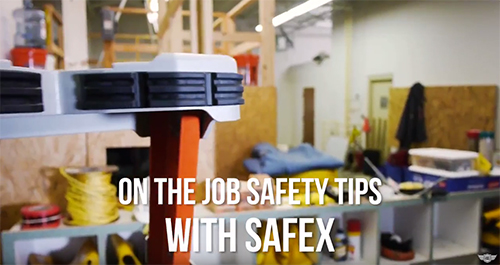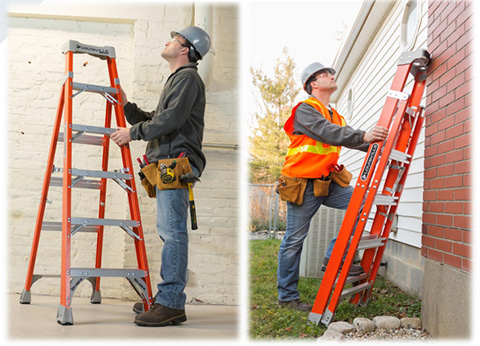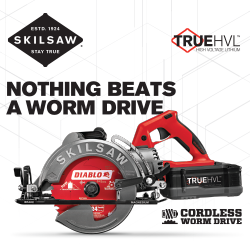The latest edition of On the Job Safety Tips with Safex is up and this time we took a look at Ladder Safety and Inspection tips. Ladders are on OSHA’s top 10 safety violations year after year which means you certainly want to keep up to avoid any citations but more importantly you want to stay safe and ensure others around are safe as well. Travis from Safex reviews some of the dos and don’ts of ladders as well as some tips on ladder inspections. Of course you should always contact a safety profession with any specific questions.
Use the Right Type of Ladder – All ladder manufacturer’s rate their ladders for weight capacity with a standard rating: Type III 200 pounds, Type II 225 pounds, Type I 250 pounds, Type IA 300 pounds, Type IAA 375 pounds. This rating includes the person, their tool and any materials so with a 5 gallon buscket of paint at 60 lbs or bundle of shingles at 70 lbs you can see very quickly why type IA & IAA are what most professional should be using.
Use the Ladder for the Designated Job – The 3 most common types of ladders for professionals are step ladders, extension ladders and platform ladders. The step ladder is the most versatile where you can access various heights and is completely free standing. The down side of the step ladder is the standing platforms are small and not intended for extended working, a very common misuse/violation with step ladders is leaning them against a work surface. This violated OSHA rules and manufacturer usage, the only current exception to that being the Louisville Cross-Step Ladders which are designed to meet OSHA guidelines for safe use as both a step ladder and a straight ladder. (See our previous post for more info on the Cross-Step Ladders)
Platform ladders are becoming much more common on jobsites as it provides a much more stable work surface for extended working overhead, common for installation of electrical, HVAC, Plumbing, etc. Platform ladders are less versatile because you do need to match the correct platform height to the application.
Straight ladders are also extremely common for professionals with main intent to provide access to another work surface such as a roof or landing. The extension ladder should be 7’ to 10’ longer than the highest support or contact point.
Inspect Ladders Regularly – Before you get on a ladder you should always do an inspection to ensure it is working properly. A well maintained ladder should last several years but that all depends on proper use and care. Travis does a very nice job of covering some of the key points and most common failure points which you should always look for. Of course if you have any questions about an issue with a ladder, don’t use it and consult a safety professional.
Check out more On the Job Safety Tips with Safex videos in this YouTube playlist. Of course if you have any Safety questions contact to professionals at Safex and they would be more than happy to help you out.






